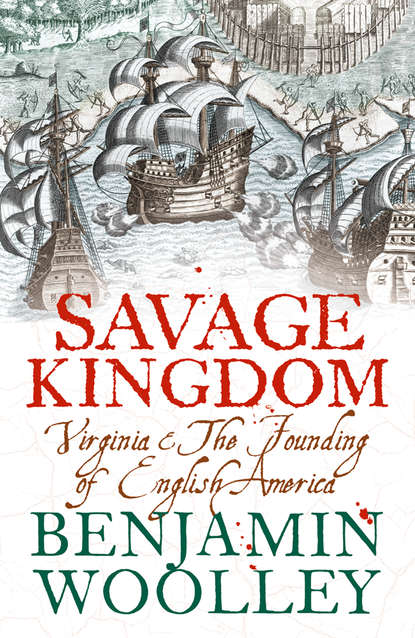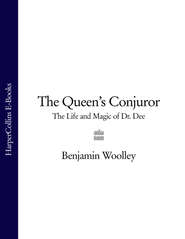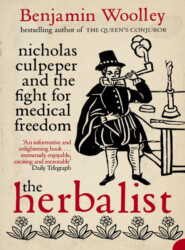По всем вопросам обращайтесь на: info@litportal.ru
(©) 2003-2024.
✖
Savage Kingdom: Virginia and The Founding of English America
Настройки чтения
Размер шрифта
Высота строк
Поля
They arrived back on 27 May, to find the settlement in chaos. It transpired that the day before, two hundred Indian warriors had mounted a sustained attack. Following his meeting with Newport, Opechancanough had evidently decided the English presence must be eliminated, before it became permanent.
At the time of the attack, the settlers had been planting corn in the newly cleared fields. Most of their weapons were still packed in ‘dryfats’, waterproof storage casks, so they only had a few pistols and swords to defend themselves. As the ranks of Indian warriors descended upon them, they had been forced to run for cover, to few finding shelter behind the island’s single defensive bulwark. Led by President Wingfield, all five council members apparently put up a fight with hand weapons, but were forced to retreat. In the ensuing skirmish, which ‘endured hot about an hour’, one boy was slain and as many as seventeen labourers wounded. Every single member of the council sustained injuries, except Wingfield, who had a miraculous escape from an arrow which passed through his beard. According to later reports, the entire company would have been slain, had not the sailors loaded one of the ships’ cannons with a ‘crossbar’ (round shot with a spike embedded in it), and fired it towards the Indian position. The projectile had hit a tree, bringing down one of its branches, which apparently fell among the attacking Indians and ‘caused them to retire’.
(#litres_trial_promo)
‘Hereupon the president was contented the fort should be palisaded,’ Smith noted dryly.
George Kendall was put in charge of designing the defences, Archer of laying out the street plan for the town. The best-known work in English on military architecture at the time was a translation of a French work by William de Bellay called The Practice of Fortification. It was sufficiently influential for Christopher Marlowe to lift a section verbatim for his popular first play, Tamburlaine the Great, and for Percy’s brother the Earl of Northumberland to hold a copy in his library. Rule one for Bellay was: ‘the figure triangular is not to be used at all’ in the ‘delineation’ of a fort, because it resulted in long, penetrable walls and vulnerable bulwarks or ramparts at each corner. Similar advice had been offered to the Roanoke settlers, who had been told to build their fort in the shape of a pentangle. Despite these warnings, Kendall chose a triangular shape. This was possibly because the river acted as a natural defence, and de Bellay had also advised that ‘if any part [of the fort’s proposed location] may be better assured of the situation than the rest’, that was the side to have any sharper angles or longer walls. Kendall proposed putting the fort’s longest side, which measured 140 yards, along the waterfront, with two shorter sides, 100 yards each, jutting into the island, enclosing an area totalling just over an acre.
(#litres_trial_promo)
Meanwhile, Archer had been working in the pinnace, drawing up plans for the town that would lie within the defensive walls. Wingfield had gone to inspect them. He rejected Archer’s work, and a confrontation ensued, defeating the president’s efforts to give Gosnold’s restless, rebellious friend a useful role. Alternative plans were drawn up, which, from archaeological remains, appear to have allowed for a row of barracks next to the southern palisade, officers’ dwellings on the western side, a storehouse to the east, and a church in the middle.
The labourers worked around the clock, with the reluctant help of the ships’ crews, and within days Kendall’s design was taking shape. The curtain wall was made of rows of split logs, sunk into a ditch that was backfilled to keep them upright. At each corner, large crescent-shaped bulwarks were built using the same method, upon which the company’s carpenters constructed stout platforms to carry lookouts and artillery. Winches and cranes were erected to lift some of the ‘four and twenty pieces of ordnance’ brought from England, and soon the bulwarks bristled with culverins, enormous cannons with barrels 11 foot long, capable of shooting 18-pound shot over a distance of nearly 2,000 foot.
(#litres_trial_promo)
While excavating around the neck of land connecting the island to the mainland, workers found a stream flowing down a small bank. In the glint of the trickling water they saw what looked like yellow crystals. Captain John Martin was immediately summoned to inspect what they had found. Samples were taken and, using apparatus brought from London, he performed an assay or test to see if any metal could be drawn off. The news that he had managed to extract a small amount of what appeared to be gold ‘stirred up in them an unseasonable and inordinate desire after riches’. A barrel was filled with soil taken from the surrounding area, for testing back in England.
(#litres_trial_promo)
Meanwhile, the Indians kept up their attacks. As the fortifications rose, their tactics changed from full-frontal assaults to harassment. On Friday 29 May, they managed to shoot forty or so arrows ‘into and about the fort’ from the cover of the surrounding woodland, before being repulsed by a volley of musket fire. ‘They hurt not any of us,’ Archer wrote, ‘but finding one of our dogs, they killed him.’ The following Sunday, while feverish construction continued, ‘they came lurking in the thickets and long grass’. Eustace Clovill, a hapless offspring of Norfolk gentry, was found ‘straggling without the fort’, and was shot six times. His brief moment in history came when he staggered back to the fort with the arrows still stuck in his body, and shouted, ‘Arm! Arm!’ before collapsing. He died eight days later.
On Thursday 4 June, as dawn was breaking, one of the settlers left the fort ‘to do natural necessity’ in the latrine just beyond the palisade. As he squatted on the ground, he was shot with three arrows by Indians who had ‘most adventurously’ crept under the bulwark blocking access to the island.
The relentless assaults soon took their toll on English morale, and the acrimony that had been stewing since the ships were stuck on the Downs erupted with new vigour. The council began to disintegrate. ‘The cause of our factions was bred in England,’ Smith later observed, but ‘grew to that maturity among themselves that spoiled all’.
Religion remained a point of contention. On arrival, the settlement chaplain Robert Hunt had implemented a puritanical regime of daily common prayer, and lengthy sermons on Sunday mornings. Wingfield made his dislike of such pious earnestness known, and on several occasions found opportunities to miss, and even to cancel, the sermons.
In fact, according to their accusers, Wingfield and Newport had no interest in the venture’s spiritual mission, even though it featured prominently in the Royal Charter. They were merely ‘making Religion their colour, when all their aim was nothing but present profit’.
The most forceful critic was Captain Smith. Having kept uncharacteristically quiet during the James river expedition, he was driven by an overwhelming sense of vindication to confront Wingfield and the council. He demanded that the president take manful possession of this virgin land. The Indians had not cultivated it, so it no more belonged to them than to the wildlife in the undergrowth or the birds in the trees. In any case, these vast expanses contained ‘more land than all the people in Christendom can manure, and yet more to spare than all the natives of those Countries can use’.
(#litres_trial_promo)
This land was waiting to be fashioned ‘by labour’ into a new ‘commonwealth’, a new England. What could command more honour for a man, Smith later wrote, ‘with only his own merit to advance his fortunes … than planting and building a foundation for his posterity, got from the rude earth by God’s blessing and his own industry without prejudice to any?’ He continued:
What can he do less hurtful to any, or more agreeable to God, than to seek to convert those poor Savages to know Christ and humanity, whose labours with discretion will triple requite thy charge and pain? What so truly suits with honour and honesty, as the discovering things unknown, erecting Towns, peopling Countries, informing the ignorant, reforming things unjust, teaching virtue and gain to our native mother country?
(#litres_trial_promo)
Several of the gentlemen excluded from the council could identify with these sentiments, and began to agitate for a more active, aggressive policy. Archer started ‘spewing out … venomous libels and infamous chronicles’ about Wingfield’s government. Wingfield had ‘affected a kingdom,’ he claimed. Archer was trying to summon a parliament, Wingfield retorted. On 6 June, Archer led a group, including several soldiers who had left their positions, who ‘put up a petition to the council for reformation’.
(#litres_trial_promo)
The content of the petition was not recorded, but its consequence was that four days later, Smith was finally absolved of all charges and made a member of the council. According to Smith’s later testimony, Wingfield was also required to pay him compensation to the value of £200, an enormous sum, which Smith claimed he magnanimously donated ‘to the store for the general use of the colony’.
(#litres_trial_promo) The following day, ‘articles and orders for gentlemen and soldiers were upon the court of guard and content was in the quarter’, meaning that peace had been restored among the unsettled ranks.
On Saturday 13 June, to reinforce a new but still fragile mood of accord, Newport presented the soldiers and labourers with a sturgeon 7 foot long, which had been caught by the crew of his ship. The next day, the settlement was approached by two unarmed envoys. Archer recognized one of them to be the ‘Kind Consort’ who had followed them in the early days of the James river expedition. The reappearance of this mysterious individual comforted the settlers, and he was invited into the fort, which was in its final stages of construction. The envoy endeavoured to explain what had been going on, reassuring the embattled, bewildered Englishmen around him that the chiefs of the Pamunkey and Arrohateck were still their friends, as were those of two tribes the English had not yet encountered, the Mattapanient and Youghtanan, who lived on western tributaries of the Pamunkey, the river north of the James. However, several other tribes were their ‘contracted enemies’, including the Quiyoughcohannock, the Weyanock and the Paspahegh, upon whose land the English had now settled. ‘He counselled us to cut down the long weeds round about our fort and to proceed in our sawing,’ Archer reported. ‘Thus making signs to be with us shortly again, they parted.’
The day after this encounter, the fort was pronounced complete. It was crudely made and far from impregnable, but probably sufficient to frustrate a full-scale attack. Inside, however, conditions for the settlers were not much better than when they had arrived, possibly worse. Having failed to extract any trade or tribute from the Indians, their food was little more than bran. ‘Our drink was water, our lodgings castles in the air,’ as Smith put it. There were no permanent buildings, except perhaps for a store to keep provisions and armaments.
(#litres_trial_promo)
Newport decided the time had come for him to leave. The ships were now fully laden with clapboard timber, the barrel of soil to test for metals, and upwards of two tons of sassafras, the highly profitable commodity brought back by Gosnold on his 1602 voyage.
The council assembled to draft a progress report for the Royal Council in London. It was brief and began on an optimistic note:
Within less than seven weeks, we are fortified well against the Indians; we have sown good store of wheat; we have sent you a taste of clapboard; we have built some houses; we have spared some hands to a discovery; and still as God shall enable us with strength we will better and better our proceedings.
There followed a complaint about the sailors, ‘waged men’ who fed off their supplies, and gathered valuable commodities such as sassafras for their own private gain, losing or damaging many tools in the process. However, mindful that these same sailors might be recruited for future relief missions, the council asked that they be ‘reasonably dealt withal, so as all the loss neither fall on us nor them’.
‘The land would flow with milk and honey if so seconded by your careful wisdoms and bountiful hands,’ the report continued. ‘We do not persuade to shoot one arrow to seek another, but to find them both. And we doubt not but to send them home with golden heads. At least our desires, labours, and lives shall to that engage themselves.’
They then listed the bountiful glories of their new home, the mountains, the rivers, the fish, the fruit, the miraculous medicinal herbs, before ending on a note of desperation:
We entreat your succours for our seconds with all expedition lest that all-devouring Spaniard lay his ravenous hands upon these goldshowing mountains, which, if it be so enabled, he shall never dare to think on.
This note doth make known where our necessities do most strike us. We beseech your present relief accordingly. Otherwise, to our greatest and last griefs, we shall against our wills not will that which we most willingly would.
The report was dated ‘James town in Virginia, this 22th of June’ and signed ‘your poor friends’ followed by a list of council names. Smith’s name appeared after President Wingfield’s.
As the council handed their report to Newport, another was pushed into his hand by one of the settlers, William Brewster. Brewster may have been related to the Pilgrim Father of the same name who set sail for America aboard the Mayflower 13 years later. He had been secretly commissioned by Cecil to write a private report on the expedition and in particular the conduct of the council.
(#litres_trial_promo)
Like the council, Brewster began with an optimistic assessment of the settlement’s prospects, and added an equally desperate plea for a supply mission to ensure their fulfilment:
Now is the King’s Majesty offered the most stately, rich kingdom in the world, never possess’d by any Christian prince. Be you one means among many to further our seconding to conquer this land as well as you were a means to further the discovery of it.
This was just the garnish for what followed: a report on the conduct of the council, describing the faction fighting that had nearly destroyed it. Unfortunately, although the beginning of the letter is still to be found among Cecil’s papers, the confidential part was torn off, and has never been recovered.
On Sunday 22 June, Hunt led the company in Holy Communion, the first to be held since their arrival. In the evening, Newport invited some of the gentlemen aboard his ship for a last supper. Final preparations were made on the Susan Constant and Discovery, while the Godspeed, which was to remain in Virginia, was decommissioned, her sails removed to the fort to prevent her being taken by renegades or attackers.
Newport set sail the following morning, promising to return within twenty weeks.
(#litres_trial_promo) The settlers lined the shore and watched the fleet cast off and make its way down the majestic James. The ships disappeared within minutes behind the thick canopy of trees covering the eastern end of the island.
Anxiety, if not dread, gripped those left behind, as they walked back into their makeshift accommodation. Living conditions were still rough. Their ‘houses’ were for the most part fragile tents, devoid of home comforts. The weather, Indians and supplies were erratic, preventing all attempts to find a settled or familiar routine. Worse yet, the councillors in whose hands their fate now rested seemed to be infected with the scheming and plots, petty rules and brutal punishments they had hoped to leave behind in England.
‘You shall live freely there [in Virginia], without sergeants, or courtiers, or lawyers, or intelligencers,’ a character in Eastward Hoe had promised. The hollow laughter aroused by those scurrilous words at the Blackfriars Theatre each night echoed all the way across the Atlantic.
SEVEN The Spanish Ambassador (#ulink_72149378-ddd8-5354-a5ed-a9f0e66f3526)
SOMETIME IN JULY, 1607, Robert Cecil was strolling under a warm summer sun in the gardens of Whitehall Palace, the royal residence in Westminster. One Lanier, either John, son of a Huguenot refugee and a royal musician, or his son Nicholas, also a musician, approached him, accompanied by a soldier called Captain Hazell. A discussion took place between this Hazell and Cecil about which nothing is known, except that it concerned Hazell embarking on a secret mission to Spain accompanied by someone ‘best experienced’ in the coasts of Virginia.
Hazell apparently recommended for the job one George Weymouth, ‘a special favourite of Sir Walter Cope’s’, and an experienced mariner who as recently as 1605 had led a reconnaissance mission to Cape Cod. Weymouth was duly hired, and a few days later, he and Hazell slipped out of London, and made their way towards Deal in Kent, where they were to pick up a ship bound for Spain.







